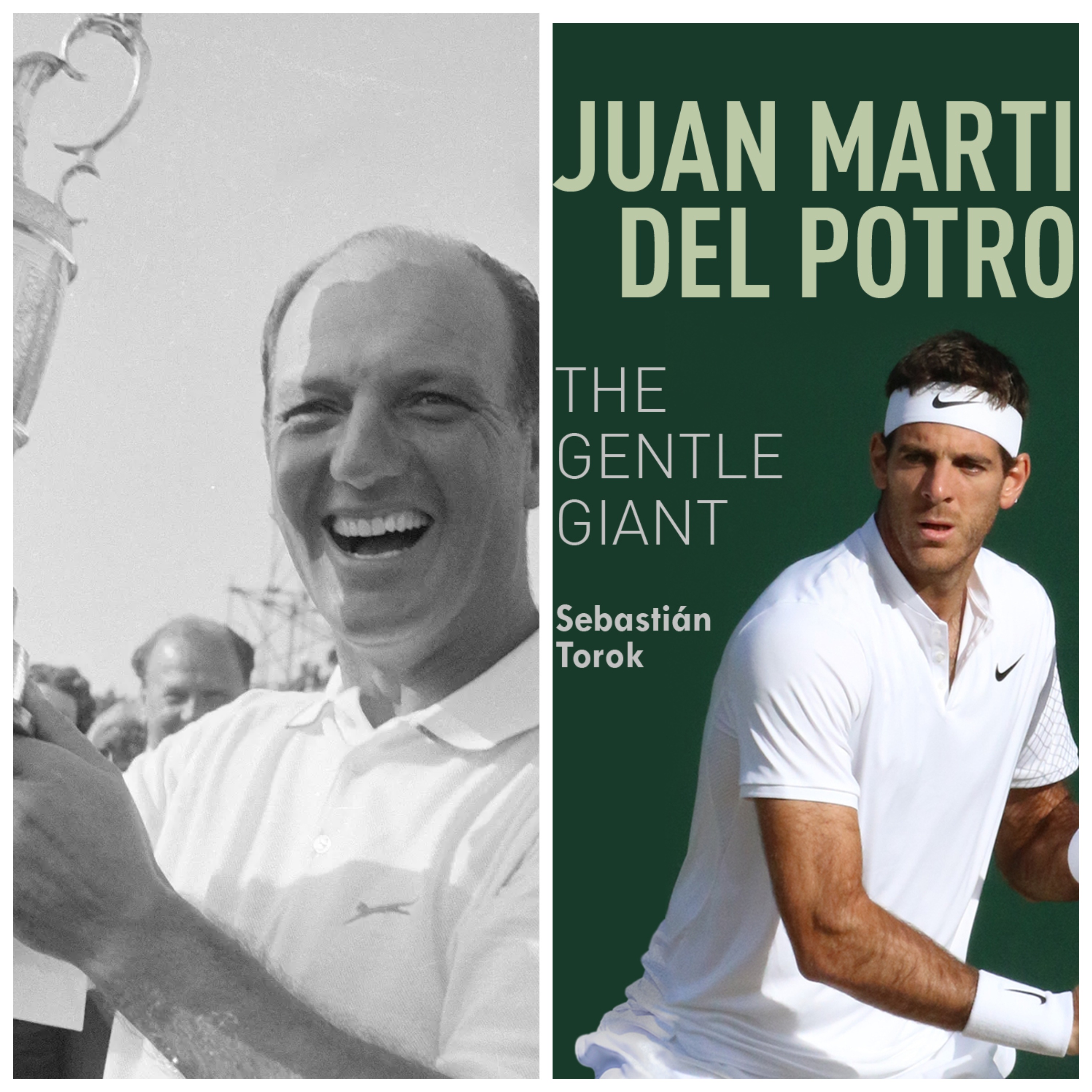Every time the Open Championship in golf is played at Royal Liverpool the name Roberto De Vicenzo comes up as the famous winner of the 1967 Open Championship there. De Vicenzo, also famous for signing for an incorrect scorecard that allowed Bob Goalby to win The Masters in 1969, is regarded as one of the greatest athletes to hail from Argentina. Sebastian Torok, in his biography of tennis star Juan Martin del Potro, had a chance to speak to De Vicenzo about del Potro before his death in 2017, about the tennis great and where he stands in the pantheon of sports figures in Argentina.
This excerpt from “Juan Martin del Potro: The Gentle Giant” (For sale and download here via amazon.com: https://www.amazon.com/dp/1937559920/ref=cm_sw_r_tw_dp_U_x_lRArEbY4VMWP3) is here below…
In the gallery of great names in Argentine sport, the first in the sport of golf is Roberto De Vicenzo. He didn’t remember in his long life many contacts with tennis. “Unfortunately I almost never played it in life,” said De Vicenzo. “I was at home lots of time and didn’t have a real social life, but I remember a lot of Hector Americo Cattaruzza, the No. 1 player in Argentina in 1937 and 1938 and him playing of the Davis Cup and with a versatility that took him to TV.
De Vicenzo’s most glorious working day was that of July 15th of 1967 where, at the age of 44 at the Royal Liverpool Golf Club, he beat the golfing giants Gary Player, Arnold Palmer and Jack Nicklaus to win the Open Championship, the most important golf tournament in the world.
De Vicenzo, who passed away at the age of 93 in 2017, said that del Potro certainly deserves to be mentioned among the best ever athletes from their country, perhaps even in a spot strikingly preponderant.
“Del Potro not only won a place in the table of the great Argentinian sports athletes, but could also maybe be the head of it,” said De Vicenzo. “His achievements had been phenomenal. He has lots of merit. To be competing again at a great level after so many surgeries isn’t something easy. He is a very lovable player and recognized worldwide. It was very emotional what he did at the Olympic Games and the Davis Cup. Also, he managed to get more people to watch tennis in Argentina. He helped spread his sport. In my era, very little people would see me. And years ago not even cats would watch tennis… Now the entire world watches it. It’s true that time has changed and there are more options.”
De Vicenzo was admired greatly for his talents but gained much respect for his behavior as a gentleman at the 1968 Masters tournament at Augusta National. When the tournament ended, he didn’t check his scorecard, where his playing partner, the American Tommy Aaron, recorded that he had scored a par four on the 17h hole, instead of the three that he had achieved. Roberto signed it without looking at it and presented it as such, despite the error that would harm him. In golf, the score that is officially signed is used. If this error had not happened, De Vicenzo would have tied for first and would have played in an 18-hole playoff, but there was no going back. Bob Goalby from the United States was named the winner and the Argentine, now knowing of the error, was just limited to saying what stayed as a memory: “What an idiot I am…” I have never heard a complaint towards Aaron nor for the authorities who applied the rules.
“Juan Martin del Potro: The Gentle Giant” tells the story of one of Argentina’s greatest tennis players and the most important of his generation. After winning the 2009 U.S. Open, defeating Roger Federer in a glorious five-set final, del Potro was poised to take over the tennis world. However, wrist problems developed and del Potro endured three surgeries over 15 months. One of the world’s most popular players, del Potro’s fan base grew as he made his comeback—watching him win his second Olympic medal in Rio in 2016, where he once lost to Andy Murray, but won the hearts of millions around the world. He followed up by leading Argentina to victory in the Davis Cup. Described as the “Gentle Giant,” del Potro has the sensitivity to comfort a ball girl hit during a match, to stop in the middle of the game to gaze at a butterfly, and to accompany a young fan in the last days of his life. However, when he grips the racket, he becomes one of the most destructive strikers of a tennis ball.
“This book is an unprecedented trip to the emotional and sporting aspect of one of the best tennis players of the last decade,” said Torok, the author of the book, an internationally regarded tennis writer for La Nacion and with ESPN in Argentina. “Juan Martin del Potro is someone who lived with tragedy since his childhood, a tennis player who hit bottom and had the strength to persevere multiple times. This book was created with more than 70 interviews of people who, in one way or another, had to do with the life of del Potro. I am very excited and proud that this book is now available in English around the world.”

